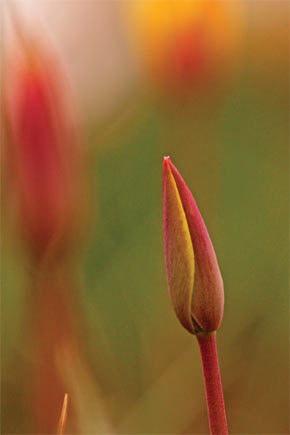 Q. I’ve planted a portion of my tulip bulbs already. The rest are still in the refrigerator and will be planted later this month. I hope it’s not too late. Will the staggered planting extend the flowering? In addition, do I need to dig them up after they bloom or can they be left in the ground?
Q. I’ve planted a portion of my tulip bulbs already. The rest are still in the refrigerator and will be planted later this month. I hope it’s not too late. Will the staggered planting extend the flowering? In addition, do I need to dig them up after they bloom or can they be left in the ground?
A. November is an ideal months to plant tulip bulbs with the short days and cool night along with other spring flowering bulbs. Unfortunately, the selection is limited. They’re best bought earlier and stored for planting now.
For many bulbs, staggering the planting does extend the blooming season. Gladiolus, and Daffodils are examples; however, this is not the case with tulips. You extend the flowering period by planting the early, mid-season and late flowering varieties. When planting, it’s important to keep your bulbs separated by flowering period. Mixing them together will produce an uneven blooming pattern. I wouldn’t be concerned if some of the bulbs sprout early. It commonly occurs, with above normal temperatures in the late fall and early winter months. The cold temperatures later on will not damage them. Unlike Daffodils and other spring flowering bulbs, tulips take several years to rejuvenate themselves after flowering. They are best replanted each year for the best color show in the spring. They don’t naturalize very well. In addition, in heavy clay soil, naturalized bulbs can rot when the area is over planted with summer color. The Darwin Tulip is the best variety for naturalizing. Tulips as well as any other bulb are removed from the ground and stored. You must wait until the foliage has turned a yellow/brown and easily separates from the ground. If you are going to replant new bulbs next year, you skip this step. Finally, Tulips, and Daffodils are popular flowering plants available February through May. They are forced into bloom for a single season. You’re going to be disappointed if you planted the bulbs expecting another color show this year.
Q. What, if any, vegetable grows in the shade during the winter months? We have a new garden in a new home and have now lost all the wonderful summer sun it had.
A. The exposure, that is sun or shade, is not an issue for growing winter vegetables and color. Right now, I’d plant the leafy varieties such as lettuce, spinach, and swiss chard. Transplants are available today as it’s too late sow seeds. They will not germinate with the cold and wet conditions. Also, available are onions and garlic. In January/February, plant Cabbage, Cauliflower, Broccoli, Asparagus, Rhubarb, and Artichokes. You shouldn’t have any problem growing the winter cool season crops in the same location where the summer varieties grew. The indirect light will be sufficient. You should wait until late January or early February to sow radishes, carrots, turnips, beets, and others outdoors in the open ground. It’s to late to sow seeds now, as they will not germinate with the wet and or cool conditions.
Buzz Bertolero is Executive Vice President of Navlet’s Garden Centers and a California Certified Nursery Professional. His web address is www.dirtgardener.com and you can send questions by email at dirtgarden@aol.com or to 360 Civic Drive Ste. ‘D’, Pleasant Hill, Calif. 94523
Leave a Reply